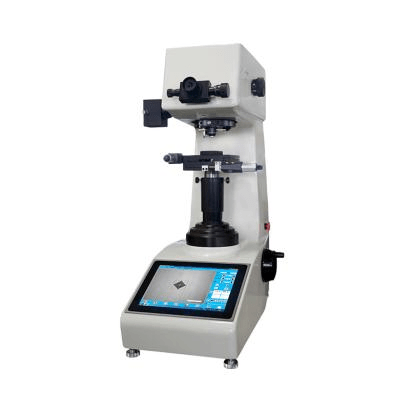What Are Some Limitations of Using a Vickers Hardness Tester?

While the Vickers Hardness Tester offers a versatile and reliable method for material testing, it does have some limitations to consider when choosing the right tool for your application. Here's a detailed breakdown of some key limitations:
l Brittle Materials: The Vickers test might not be ideal for very brittle materials. The application of the load and the resulting indentation can cause these materials to crack or fracture, potentially rendering the test invalid and damaging the material itself. Alternative hardness testing methods, like Knoop hardness testing, might be better suited for such materials as they use a different indenter geometry that creates a smaller and less stressful indentation.
l Time Consumption: Compared to some other hardness testing methods like Rockwell testing, the Vickers test can be slightly slower. This is primarily due to the need for precise measurement of the indentation diagonals. While the testing process itself is automated in applying the load and holding the dwell time, accurately measuring the tiny indentation diagonals requires using a microscope with a calibrated scale or an automated vision system. This measurement step can add time to the overall testing process.
l Operator Skill: While the Vickers test is generally automated in terms of load application and dwell time, achieving accurate results relies on the operator's skill in measuring the indentation diagonals. Using a microscope effectively and interpreting the measurements accurately requires some training and experience. Modern Vickers testers with automated vision systems can mitigate this limitation by offering more precise and objective digital measurements, reducing reliance on operator skill.
l Surface Preparation: Accurate Vickers hardness testing requires a smooth and flat surface on the material. Depending on the material and testing standards, surface preparation might involve grinding, polishing, or cleaning. This preparation step can add time to the overall testing process, especially for rough or uneven surfaces. For some applications, the need for meticulous surface preparation might be a drawback.
l Indentation Size: Although the Vickers test creates a relatively small indentation compared to some other methods, it might still be a concern for very thin materials or components with limited surface area. The indentation depth can be a significant portion of the material's thickness, potentially affecting the accuracy of the test or even causing the material to break through entirely. In such cases, alternative testing methods that create even smaller indentations, like Knoop hardness testing, might be a better choice.
By understanding these limitations, you can make an informed decision about whether a Vickers Hardness Tester is the most suitable tool for your specific material testing needs. Considering the material properties, desired testing speed, and available resources for surface preparation and operator training will help you choose the most appropriate hardness testing method.
- Art
- Causes
- Crafts
- Dance
- Drinks
- Film
- Fitness
- Food
- Giochi
- Gardening
- Health
- Home
- Literature
- Musica
- Networking
- Altre informazioni
- Party
- Religion
- Shopping
- Sports
- Theater
- Wellness


